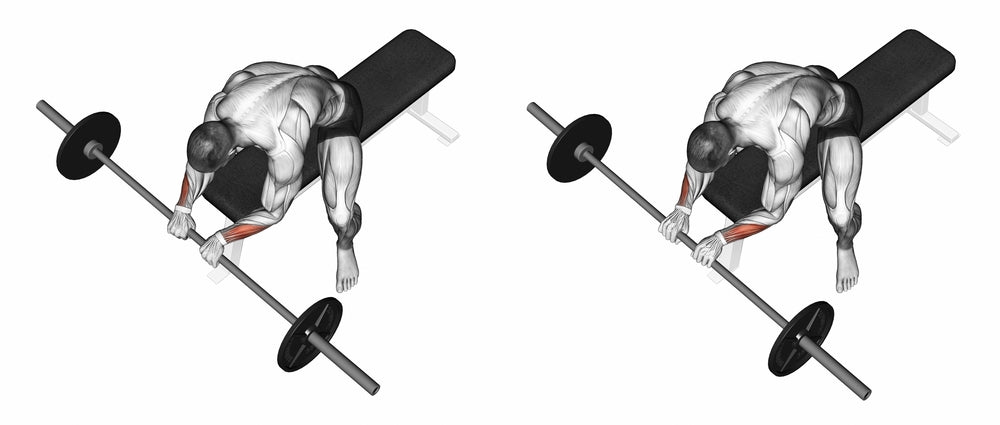Exercise Anatomy
Reverse WristCurl (Wrist Extension/Hyperextension)
The Reverse Wrist Curl, emphasizing wrist extension, is a valuable exercise for building strength in the extensor muscles of the forearm. This often-neglected movement complements the more common wrist flexion exercises, promoting balanced forearm development. Strengthening the extensors not only enhances wrist stability but also contributes to overall grip strength. Incorporate this exercise to ensure a well-rounded forearm workout, improving functional strength and reducing the risk of muscular imbalances.

Major Muscles and Actions Involved
During the Reverse Wrist Curl, the primary joint action is wrist extension, where the back of the hand moves away from the forearm. This movement targets the wrist extensor muscles, including the extensor carpi radialis brevis, extensor carpi radialis longus, extensor carpi ulnaris, and the extensor digitorum. Additionally, the extensor indicis and extensor digiti minimi are engaged, contributing to the overall extension of the wrist joint.

Sports Uses
The Reverse Wrist Curl, focusing on wrist extension, offers direct benefits to athletes involved in various sports that demand a strong and stable grip. Weightlifters can enhance their performance in exercises like the clean and snatch, where maintaining control during the upward phase is crucial. Climbers, whether rock climbers or obstacle course racers, benefit from strengthened wrist extensors for better grip endurance when navigating challenging surfaces. Additionally, athletes in racquet sports such as tennis or badminton can improve their backhand strength and stability, contributing to more powerful and controlled shots. Incorporating the Reverse Wrist Curl into training routines can significantly improve wrist stability, reducing the risk of injuries and enhancing overall performance in activities requiring a robust grip.
Exercise Tips
- echnique: Sit or stand with a straight back, holding a barbell or dumbbells with an overhand grip. Rest your forearms on a bench or your thighs, allowing your wrists to hang beyond the support.
- Range of Motion: Perform a controlled wrist extension, lifting the weight by moving the back of your hands away from your forearms. Ensure a full range of motion to effectively target the wrist extensors.
- Amount of Weight Used: Start with a light weight to establish proper form. Gradually increase resistance as your wrist strength improves, focusing on controlled movements throughout.
- Grip: Use an overhand grip, keeping your wrists in a neutral position. Maintain a secure grip on the barbell or dumbbells throughout the exercise to prevent slippage.
- Variations: Explore variations with different equipment, such as using a barbell, dumbbells, or a wrist curl machine. Each variation provides a slightly different stimulus to the wrist extensors.
- Unique Muscle Involvement: This exercise primarily targets the wrist extensor muscles, including the extensor carpi radialis brevis, extensor carpi radialis longus, extensor carpi ulnaris, extensor digitorum, extensor indicis, and extensor digiti minimi.
- Breathing: Inhale as you lower the weight and exhale during the upward phase. Maintain a consistent breathing rhythm to enhance stability and concentration.
- Forearm Position: Keep your forearms stationary on a bench or thighs, isolating the wrist extensors. Minimize upper arm movement to maximize the effectiveness of the exercise.
- Controlled Eccentric Phase: Pay attention to the lowering (eccentric) phase of the movement. Resist the urge to let the weight drop quickly, emphasizing control for optimal muscle engagement and joint health.
- Progression: Track your progress and gradually increase resistance. Strive for incremental improvements in strength and endurance over time to continually challenge your wrist extensors.
